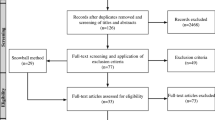Abstract
To establish real u-healthcare environments, it is necessary to receive the context information obtained from various platforms at the proper time in portable devices which operate using both wired and wireless communication. Moreover, a knowledge model is required that reflects the information and characteristics needed for such services while remaining appropriate for medical reference. This paper develops an ontology-based healthcare context information model to implement a ubiquitous environment. Contextual information will be extracted and classified to implement the healthcare services using the context information model. The healthcare context information model can be defined using the ontology, and a common healthcare model will be developed by considering medical references and service environments. Application and healthcare service developers can use the sensed information in various environments by authoring device- and space-specific ontologies based on this common ontology. In addition, this paper designs a personalized u-healthcare service system. The validity of the model used in this study is evaluated for the food and exercise recommendation in u-healthcare services.










Similar content being viewed by others
References
Choi YS, Cho SH, Sei JM, Lee NH, Park WH, Song KE (1999) Effectiveness of nutrition counseling on dietary behavior and serum levels of lipids and antioxidant in patients with cardiovascular disease. Korean J Nutr 32(6):681–690
Dobrev P, Famolari D, Kurzke C, Miller BA (2002) Device and service discovery in home networks with OSGi. IEEE Commun Mag 40(8):86–92
Gong L (2001) A software architecture for open service gateways. IEEE Internet Comput 5(1):64–70
Lee MS (2004) Relationship of the relative risks of the metabolic syndrome and dietary habits of middle-aged in Seoul. Korean J Community Nutr 9(6):695–705
McCarthy J (1993) Notes on formalizing contexts. Proceedings of the Thirteenth International Joint Conference on Artificial Intelligence. pp 555–560
New Life Hypertension & Diabetes Clinic, http://www.goliving.co.kr
Samulowitz M, Michahelles F, Linnhoff-Popien C (2001) Capeus: an architecture for context-aware selection and execution of services. In new developments in distributed applications and interoperable systems, Kluwer Academic Publishers. pp 22–23
Schilit BN, Adams N, Want R (1994) Context-aware computing applications. Proceedings of the Workshop on Mobile Computing System and Applications. pp 85–90
Schmidt A, Laerhoven KV (2001) How to build smart appliances. IEEE Personal Communications
Schmidt A, Beigl M, Gellersen HW (1999) There is more to context than location. Comput Graph 23(6):893–901
Sheng QZ, Benatallah B (2005) ContextUML: a UML-based modeling language for model-driven development of context-aware web services. Proceedings of the International Conference on Mobile Business. pp 206–212
Welltizen, http://neps.welltizen.com
Acknowledgment
This research was supported by Basic Science Research Program through the National Research Foundation of Korea funded by the Ministry of Education, Science and Technology. (No. 2011–0008934)
Author information
Authors and Affiliations
Corresponding author
Additional information
This paper is significantly revised from an earlier version presented at the International Conference on Information Science and Applications 2011.
Rights and permissions
About this article
Cite this article
Kim, J., Chung, KY. Ontology-based healthcare context information model to implement ubiquitous environment. Multimed Tools Appl 71, 873–888 (2014). https://doi.org/10.1007/s11042-011-0919-6
Published:
Issue Date:
DOI: https://doi.org/10.1007/s11042-011-0919-6




